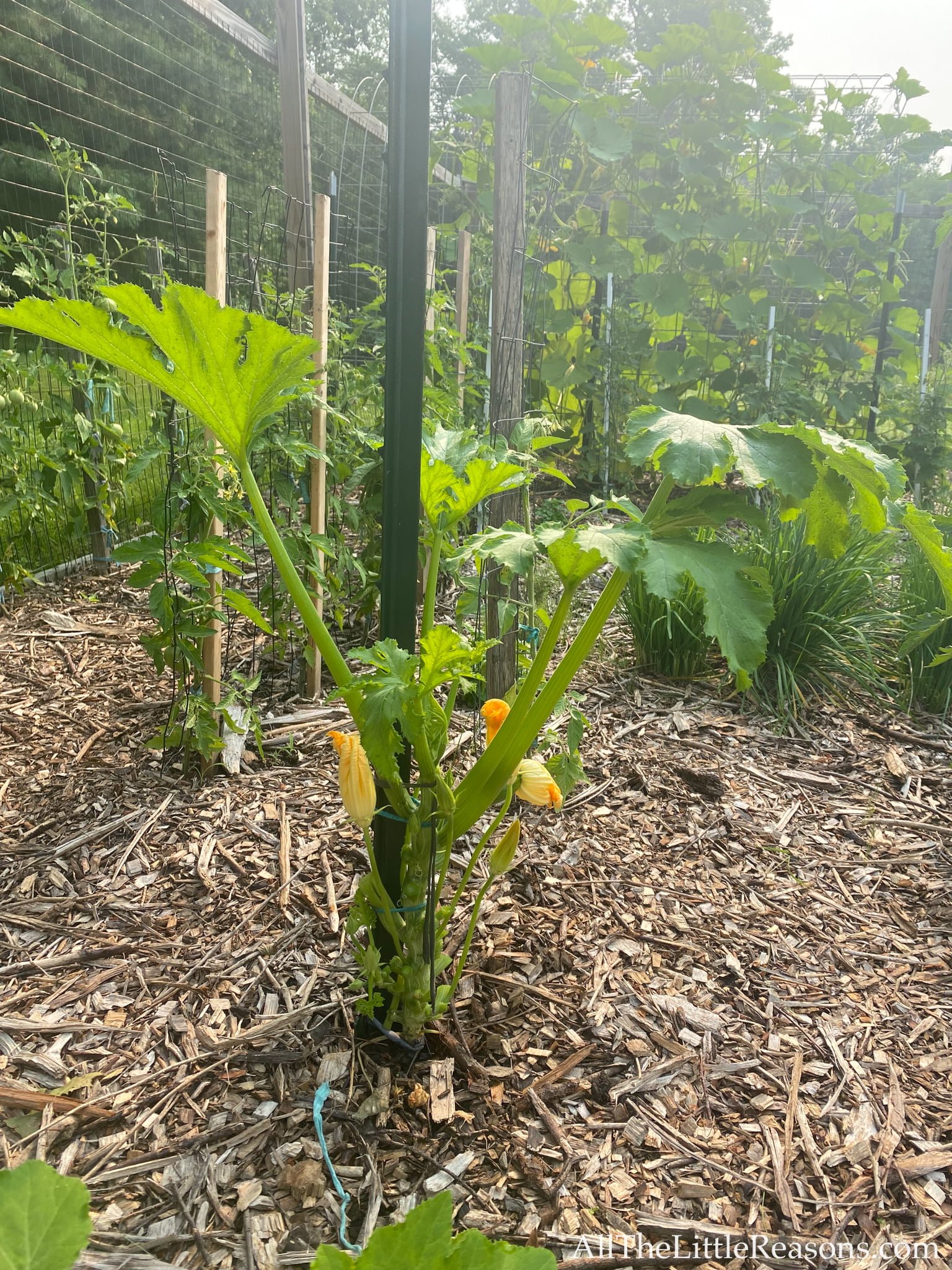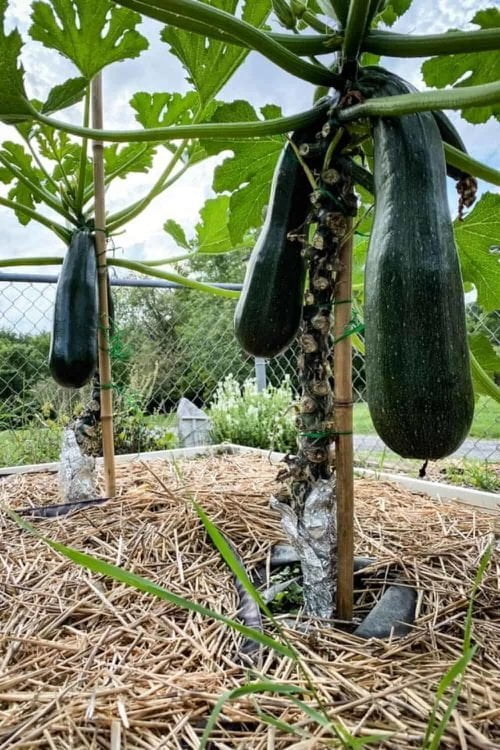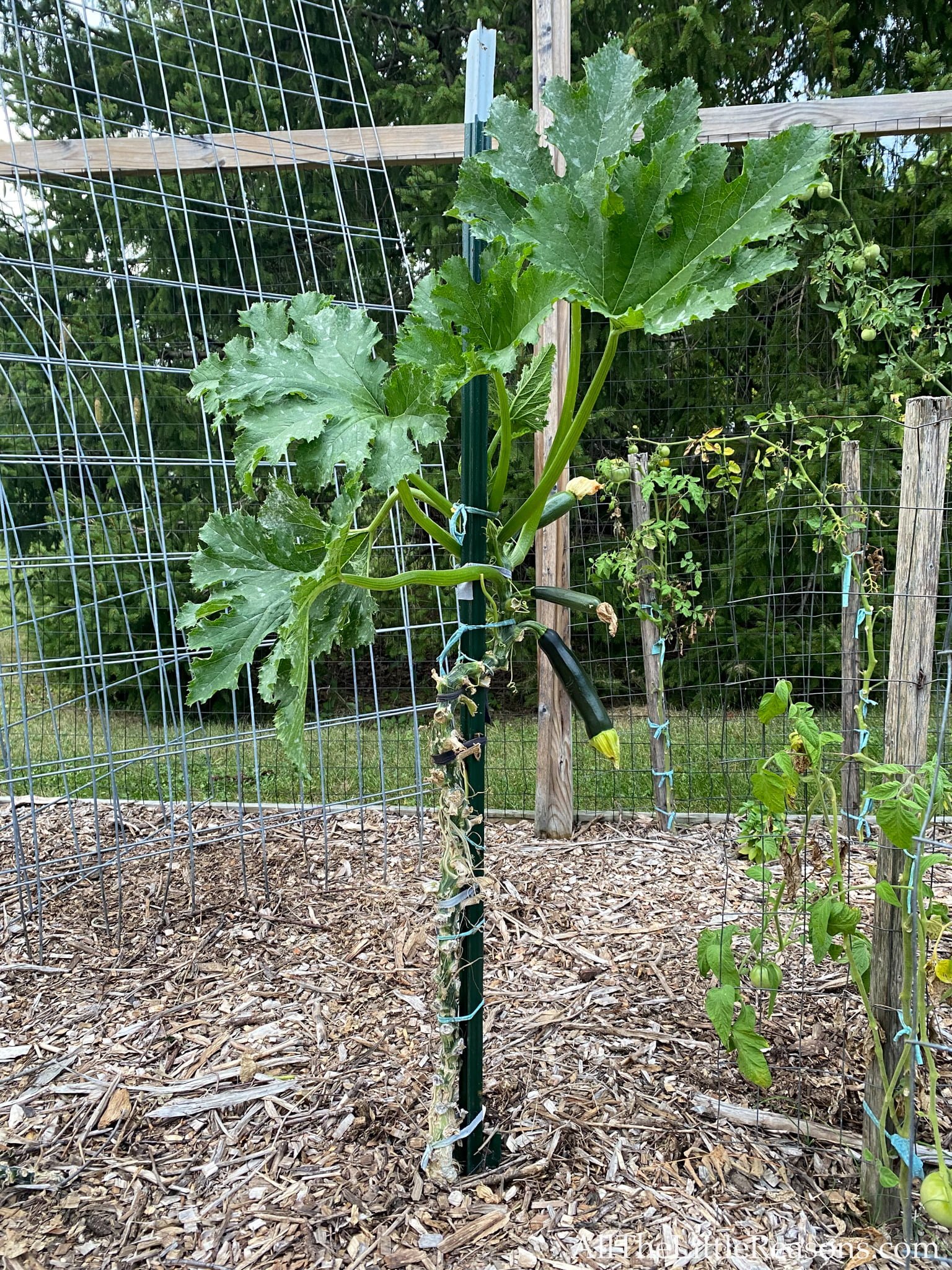Are you a gardening enthusiast looking to maximize your space and yield? Look no further! In this article, you will discover valuable tips and tricks for growing zucchini vertically. By implementing these techniques, you can take advantage of vertical space in your garden and enjoy a bountiful harvest of zucchini. Whether you have a small backyard or a balcony garden, this article will provide you with practical advice on how to grow zucchini vertically and make the most of your gardening experience. So, grab your gardening gloves and get ready to learn some innovative methods for growing zucchini!

Choosing the Right Vertical Structure
When it comes to growing zucchini vertically, choosing the right structure is crucial for the success of your garden. There are several factors to consider when selecting the vertical structure for your zucchini plants.
Considering the available space
Before you decide on the type of vertical structure, take a look at the available space in your garden. Zucchini plants require ample space to grow and thrive. Be sure to measure the area and choose a vertical structure that can accommodate the size of the plant. Consider the height and width of the structure to ensure it fits within your garden space.
Determining the weight-bearing capacity
Zucchini plants can become quite heavy, especially when they are laden with fruits. It is essential to choose a vertical structure that has a sturdy weight-bearing capacity. This will prevent the structure from collapsing under the weight of the plant and ensure the safety of your zucchini crop.
Selecting the appropriate height
The height of the vertical structure is another important factor to consider. Zucchini plants can grow quite tall, so you need a structure that provides enough vertical support for the vines. This will allow the plant to grow vertically without sprawling across the ground. Consider the mature height of the zucchini variety you have chosen and select a structure that is tall enough to accommodate its growth.
Preparing the Soil
A well-prepared soil is the foundation for a successful zucchini garden. Follow these steps to ensure your soil is ready for planting zucchini vertically.
Selecting a suitable location
Zucchini plants thrive in a sunny location that receives at least six hours of direct sunlight each day. Choose a well-draining area in your garden that gets ample sunlight. Avoid low-lying areas that may become waterlogged and cause root rot.
Loosening the soil
Before planting, it is important to loosen the soil in the designated area. Use a garden fork or tiller to break up any compacted soil and create a light, fluffy texture. This will allow the zucchini roots to penetrate the soil easily and provide good drainage.
Adding organic matter
To improve the fertility and structure of the soil, incorporate organic matter such as compost or well-rotted manure. This will enrich the soil with essential nutrients and enhance its ability to retain moisture. Spread a layer of organic matter over the soil surface and mix it in thoroughly using a garden fork or tiller.
Testing and adjusting pH levels
Zucchini plants prefer a slightly acidic to neutral soil pH range of 6.0 to 7.0. It is advisable to conduct a soil test to determine the pH level of your soil. Soil testing kits are readily available at garden centers or through your local agricultural extension office. If the pH level is outside the recommended range, amend the soil accordingly to create optimal growing conditions for zucchini.
Starting with the Right Seeds
Choosing the right seeds is essential to ensure a successful zucchini harvest. Here are some tips for selecting and planting zucchini seeds.
Choosing the zucchini variety
Zucchini comes in various shapes, sizes, and colors. When choosing a zucchini variety, consider aspects such as taste preference, growth habit, and space availability. Some popular zucchini varieties suitable for vertical growing include ‘Black Beauty,‘ ‘Golden zucchini,’ and ‘Costata Romanesca.
Selecting high-quality seeds
It is crucial to invest in high-quality zucchini seeds to maximize your chances of a successful harvest. Look for reputable seed suppliers or nurseries that provide certified seeds. High-quality seeds will have better germination rates and disease resistance, ensuring healthy plant growth.
Considering disease resistance
Zucchini plants are susceptible to certain diseases, such as powdery mildew and bacterial wilt. To minimize the risk of disease, choose zucchini varieties that have been bred for disease resistance. These varieties are more likely to withstand common diseases and produce a higher yield.
Providing Adequate Sunlight
Sunlight is vital for the growth and development of zucchini plants. Follow these steps to ensure your zucchinis receive plenty of sunlight.
Determining the sunlight requirements
Zucchini plants thrive in full sun, which means they require at least six hours of direct sunlight per day. Observe the chosen location throughout the day to ensure it receives adequate sunlight. Avoid planting zucchini in areas that are shaded by buildings, trees, or other structures.
Positioning the vertical structure for optimal sun exposure
When setting up your vertical structure, consider its orientation and positioning to maximize sun exposure for your zucchini plants. Place the structure in a way that allows the leaves and vines to receive as much sunlight as possible. Positioning the structure correctly will ensure that each part of the plant gets the sunlight it needs for vigorous growth.

Watering Techniques
Proper watering is crucial for the health and productivity of zucchini plants. Follow these techniques to ensure your zucchinis receive adequate moisture.
Determining the water needs
Zucchini plants require consistent moisture throughout the growing season. The general guideline is to provide approximately 1-1.5 inches of water per week. However, the water needs may vary based on factors such as temperature, rainfall, and soil type. Monitor the soil moisture content regularly to determine if additional watering is necessary.
Applying proper watering techniques
When watering zucchini plants, it is important to avoid wetting the foliage excessively. Overhead watering can promote the development of fungal diseases. Instead, focus on watering the soil directly and deeply. Use a soaker hose or drip irrigation system to deliver water at the base of the plant. This allows the water to reach the roots efficiently and helps prevent moisture-related diseases.
Avoiding overwatering
While it is essential to provide adequate moisture, overwatering can be detrimental to zucchini plants. Overly saturated soil can lead to root rot and other fungal diseases. To avoid overwatering, check the moisture level of the soil before watering. Stick your finger about an inch into the soil. If it feels moist at that depth, it is likely that the plants do not need additional water.
Pruning and Training
Pruning and training are crucial techniques when growing zucchini vertically. These practices help control the plant’s growth and promote better airflow, leading to healthier plants and higher yields.
Understanding the importance of pruning
Pruning is important for zucchini plants as it helps remove unnecessary foliage and promotes better air circulation. Trimming the leaves and shoots also allows sunlight to reach the lower parts of the plant, encouraging uniform growth and fruiting.
Learning the correct technique for pruning zucchini
To prune zucchini plants, start by removing any damaged or diseased leaves or stems. This will prevent the spread of diseases and pests. Next, trim any excessive foliage or lateral branches that may be shading the plant. Lastly, prune the main vines to control their length and redirect their growth towards the vertical structure.
Training the vines to grow vertically
To train zucchini vines to grow vertically, gently tie them to the vertical structure using garden twine or soft plant ties. As the plant grows, periodically wrap the vines around the structure to encourage upward growth. This will prevent the vines from sprawling across the ground and help maximize your garden space.

Providing Nutrients
Proper nutrition is essential for the healthy growth and high productivity of zucchini plants. Follow these steps to ensure your zucchinis receive the nutrients they need.
Choosing the right fertilizer
Zucchini plants have high nutrient requirements, so choosing the right fertilizer is crucial. Look for a balanced fertilizer with equal proportions of nitrogen, phosphorus, and potassium (N-P-K). Organic fertilizers such as compost or well-rotted manure are also excellent choices, as they add nutrients to the soil gradually.
Applying fertilizers at the appropriate times
Zucchini plants require regular feeding throughout the growing season. Apply a slow-release fertilizer or organic matter when preparing the soil. Follow up with additional applications of fertilizer every four to six weeks during the growing season. Be sure to follow the recommended dosage as over-fertilization can harm the plants.
Avoiding excessive fertilization
While providing adequate nutrients is important, it is essential to avoid excessive fertilization. Overapplication of fertilizers can lead to nutrient imbalances, root burn, and environmental pollution. Always follow the instructions on the fertilizer package and monitor the plants’ response. If the plants appear healthy and are growing well, further fertilizer applications may not be necessary.
Managing Pests and Diseases
Like any other garden plants, zucchini can face challenges from pests and diseases. Here are some tips to help you manage and prevent common issues.
Identifying common zucchini pests
Zucchini plants can fall victim to pests such as aphids, squash bugs, and cucumber beetles. Regularly inspect your plants for any signs of pest infestation, such as chewed leaves, wilting, or sticky honeydew residue. Early detection allows you to take prompt action and minimize the damage.
Implementing natural pest control methods
To manage pests in your zucchini garden, consider using natural pest control methods. For example, you can introduce beneficial insects like ladybugs or lacewings, which feed on common garden pests. Additionally, practicing crop rotation, interplanting with companion plants that repel pests, and using organic insecticidal soaps or neem oil can also help control pests effectively.
Recognizing common zucchini diseases
Zucchini plants can be susceptible to diseases such as powdery mildew, bacterial wilt, and various fungal infections. Watch for symptoms like white powdery spots on leaves, yellowing or wilting foliage, or rotting fruit. Early recognition of these diseases allows for appropriate action to prevent their spread.
Taking preventive measures
Prevention is key in managing zucchini diseases. Ensure proper spacing between plants to allow for good airflow, as this reduces the humidity that promotes disease development. Avoid overhead watering to minimize moisture on the foliage, and promptly remove any infected plant material to prevent the spread of diseases. Applying organic fungicides or following a regular preventive spraying schedule can also help protect your zucchini plants.

Harvesting Zucchini
Harvesting zucchini at the right time ensures the best flavor and quality. Follow these guidelines for proper zucchini harvesting.
Determining the proper harvesting time
Zucchini is typically ready to be harvested when it reaches a length of 6 to 8 inches and has a bright, glossy skin. Pick the zucchinis before they become too large and develop a tough texture. Regularly check the plants and harvest the zucchinis as soon as they reach the desired size.
Using the correct harvesting technique
To harvest zucchini, use a sharp knife or pair of gardening shears to cut the fruit from the plant, leaving a short stem attached. Avoid twisting or yanking the zucchinis off the vine, as this can damage the plant. Handle the harvested zucchinis with care to avoid bruising or puncturing the skin.
Storage and Preservation
If you have an abundance of zucchini, proper storage and preservation methods can help you enjoy them even after the growing season has ended.
Storing zucchini correctly
Freshly harvested zucchinis can be stored in the refrigerator for up to a week. Wrap them in a damp paper towel and place them in a plastic bag to retain moisture. Alternatively, you can store them in the crisper drawer of your refrigerator.
Preserving zucchini through freezing, canning, or pickling
If you have an excess supply of zucchinis, consider preserving them for later use. Zucchinis can be frozen, canned, or pickled to prolong their shelf life. Freezing requires blanching the zucchini slices briefly in boiling water before transferring them to freezer bags. Canned and pickled zucchinis require specific recipes and proper canning techniques to ensure safe preservation. Consult reliable sources or canning guides for detailed instructions on these preservation methods.
With these comprehensive tips, you are now equipped to grow zucchini vertically successfully. Enjoy the abundant harvest of delicious zucchinis from your garden and share them with friends and family!




